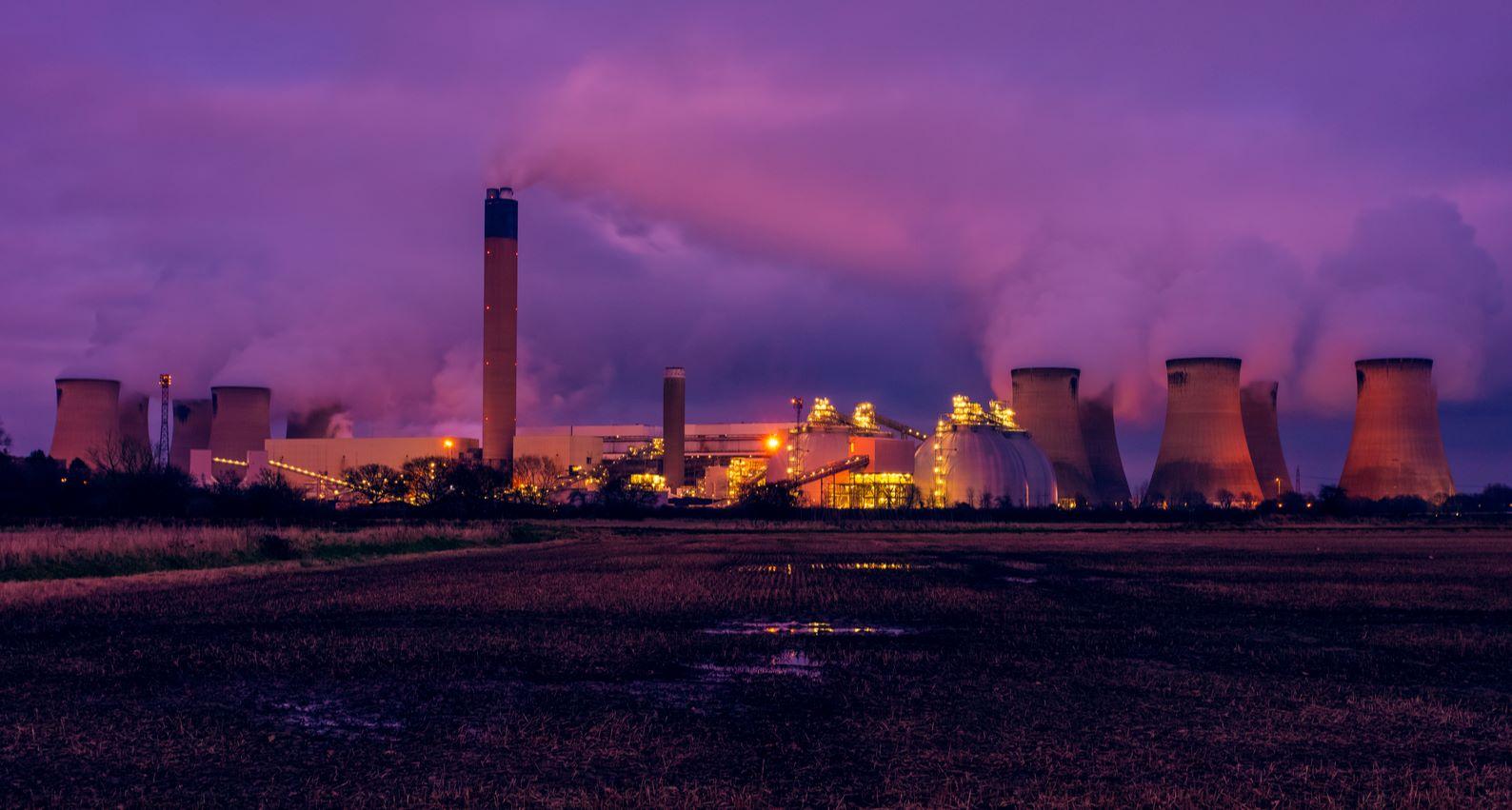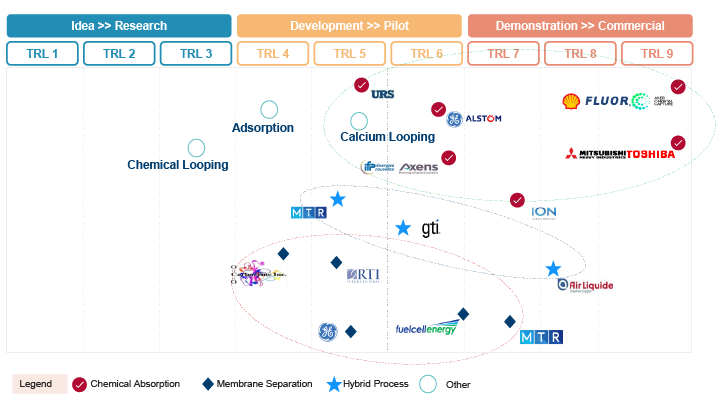Carbon Capture – Technologies for Managing Direct Emissions
Published on 08 Dec, 2021

Countries across the world have committed to reduce their carbon emission, in line with the Paris Agreement of 2017 that seeks to keep the increase in atmospheric temperature below 1.5°C globally. Initiatives such as carbon capture (CC) can play a critical role in achieving these targets. However, it is necessary to develop and leverage technologies facilitating CC and create favorable policy frameworks. While some countries are actively promoting CC, recognizing its many advantages, it needs to be adopted at a much larger scale. CC has the potential to reduce the planet’s emission level significantly and help countries achieve their net zero commitments.
The destructive impact of climate change has prompted governments across the globe to increase their sustainability efforts. With countries committing to meet the net zero emission objective within the next few decades, innovative technologies are being developed to support sustainable projects and ideas.
One such project is developing technologies for carbon capture (CC). A suite of technologies is currently under research to trap the carbon dioxide (CO2) produced by industries and burning of fossil fuels, and either bury it underground or utilize it. CC technologies have been in existence since the 1970s, but their use has been limited. Given the growing awareness of the adverse impact of climate change worldwide and creation of favorable policy frameworks, prospects for CC technologies appear bright.
The process
CO2 can be separated from other gases either produced by industries or from the burning of fossil fuels through three types of processes:
- Post-combustion – CO2 is removed from the emissions arising from the combustion of fossil fuels with the help of a solvent. The technology is mainly applied in natural gas combined cycle (NGCC) and pulverized coal (PC) plants. It is ideal for retrofit applications.
- Pre-combustion – The primary fuel is made to react with steam and oxygen; the resultant is a mix of carbon monoxide and hydrogen, known as syngas. The conversion of carbon monoxide to CO2 takes place in a shift reactor. The CO2 is then treated further to extract hydrogen, which is used to generate power or heat. This approach is ideal for integrated gasification combined cycle (IGCC) power plants.
- Oxy-fuel combustion – The primary fuel is combined with oxygen which produces a flue gas containing a high concentration of CO2 (80%) and water vapor. Post-cooling, the flue gas condenses to water vapor, with an almost pure stream of CO2. However, additional equipment is required for the in-site production of oxygen from air. The oxy-fuel process is predominantly used in natural gas processing, and in the production of cement, steel, and ammonia.
Technologies for CC

Some of the existing technologies are:
Chemical absorption – The technology works on the underlying principle of post-combustion capture. It yields a high-quality product containing >99% methane, with <0.1% losses. While the pressure required to operate is low, the heat energy required for extracting CO2 from the absorbent is high. In commercial applications, usually amine-based solvents are used. Currently, research is on to find an alternative solvent with lower extraction energy requirement. The technology is yet to be widely used in pressure swing adsorption or water scrubbing in the biogas sector. However, interest is growing, paving the way for research to increase the efficiency of CO2 removal from flue gases emitted by the burning of fossil fuels.
Adsorption – Another promising technology with relatively low energy requirement, it is suitable for small-scale capture setups. A wide variety of novel adsorbents and cyclical processes have been developed under this process. Hybrid adsorbent technologies have been studied pertaining to the application of this process which can be combined with other reaction or separation technologies. Currently, the technology is at TRL level 6-7 with technology developers trying to address the key challenges such as sensitivity to moisture content and the need to reduce energy regeneration and cycling.
Calcium looping – The cement industry is one of the main contributors to CO2 in the atmosphere. As a hybrid of post-combustion and oxy-fuel combustion technologies, calcium looping has high potential for capturing CO2 in cement plants. The advantages of calcium looping are as follows:
- The carbonator/calciner acts as the source of heat and generates steam, which can be used to produce additional power. The energy required for this technology is several percentage points lower than that needed in conventional amine scrubbing.
- Limestone is used as a sorbent. Not only is it available in abundance, it is also non-hazardous and reasonably priced compared to amine solvent.
- The spent sorbent can be further used in industrial processes such as cement making. This can help in decarbonizing the cement industry and achieving near-zero emissions.
While it can work as a standalone approach, the system can also be integrated with other technologies. Despite the strong support for the technology in theory, it is yet to progress beyond the pilot stage.
The next generation technologies under development are:
- Chemical Looping Combustion (CLC) – It functions on the concept of transfer of oxygen from the combustion of air to the fuel through an oxygen carrier in the form of a metal oxide. The benefit of this process is that CO2 is not diluted with N2. As opposed to other technologies, no significant energy penalty is associated with this method; plus, it eliminates the need for external capture devices. Hence, it ends up being less costly. A major drawback, however, is that the oxygen carriers are exposed to strong chemical and thermal stresses in every cycle which can increase depreciation.
- Membranes – This gas separation technology can be operated continuously. A membrane penetrates the gas mixture and filters out unwanted emissions, thereby separating the gases. The membrane CC technology is under research to address certain challenges such as CO2 selectivity enhancement and improvement of thermal resilience.
- Ionic liquids – Ionic liquids (ILs) have inherent advantages that make them an attractive alternative to conventional sorbents. Research is on to modify the chemical compounds in ILs in order to improve their performance in CO2 absorption. For instance, deep eutectic solvents (DESs) have emerged as an economical alternative to address the high cost and high viscosity of conventional ILs.
Conclusion
CC can help countries and companies achieve their net zero emission targets. While the operating technologies are effective and efficient, they are also expensive. Plus, uncertainty regarding policies have hindered progress.
CC projects need to be encouraged worldwide by investing capital and providing a strong policy framework for largescale implementation. The technology has the potential to slow the temperature increase and address climate change.

